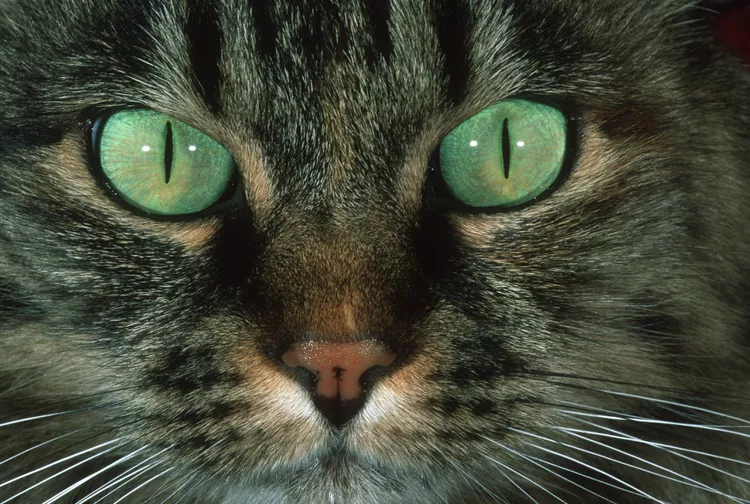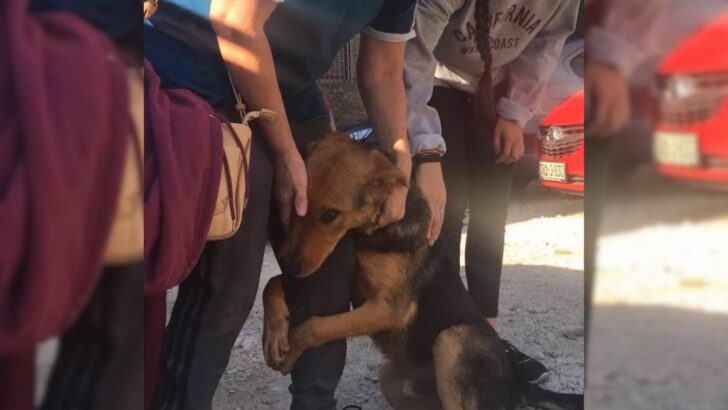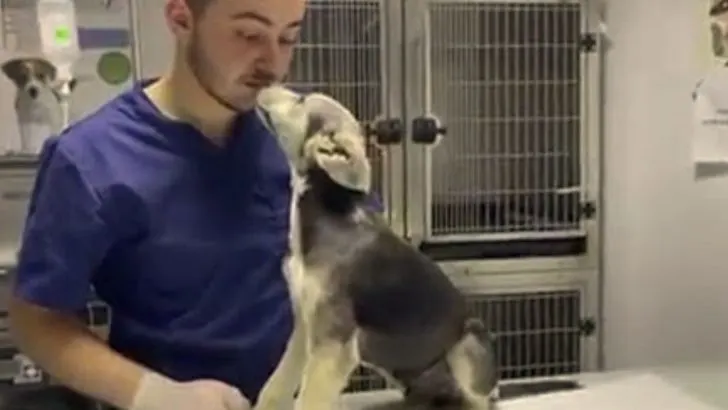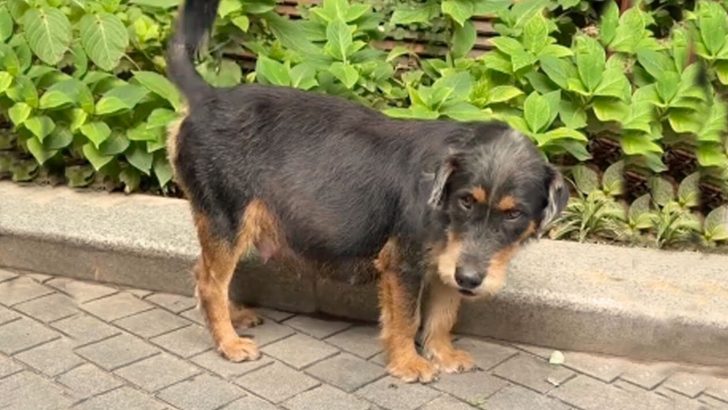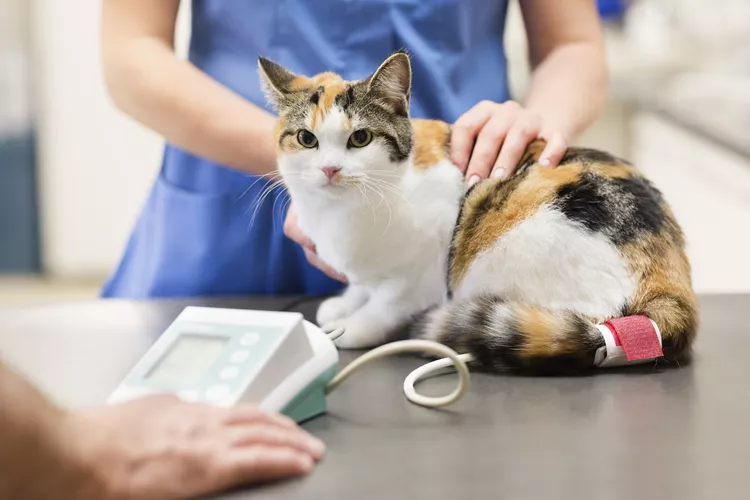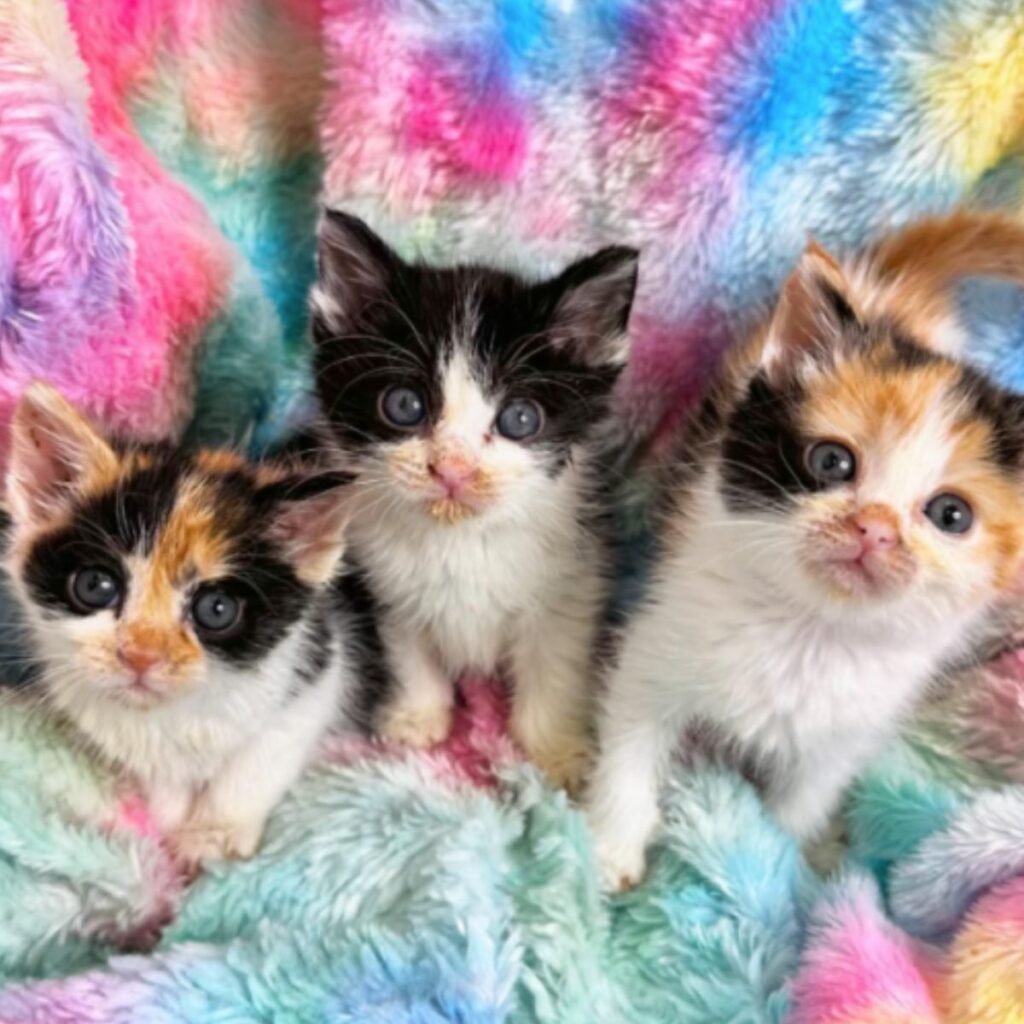A cat’s eyes are one of their most alluring features. From their big almond shape to their stunning range of colors, it’s hard to look away when you lock eyes with a cat. This is one of the reasons it is so quickly apparent when something is wrong. If one of those shiny bright eyes is suddenly swollen, shut tight, red, or tearing, it can certainly be worrisome. There may be many possible causes for a swollen eye in cats. In all cases, they need to be evaluated and diagnosed by a veterinarian right away to prevent longterm damage.
While eye problems are common to all cats, some cats are more at risk for certain kinds of eye problems due to their conformation. For example, Persian cats and other breeds with large, bulging eyes are more at risk for trauma to their corneas, the surface of their eyes, as well as proptosis, or displacement of the eye from the socket.1 The good news is that many eye conditions are very treatable if caught early, so the sooner your cat is examined, the more likely it is to make a full recovery. Find out more about the underlying causes for swollen eyes, how a diagnosis is made, and how these conditions may be treated.
Causes of Swollen Eyes in Cats
Just like in humans, swelling can occur for many different reasons, and it is important to distinguish between different kinds of swelling to help determine the root cause. Swelling is a sign of inflammation, which occurs whenever there is damage to normal tissue. Damaged cells release chemicals that trigger an inflammatory reaction leading to fluid accumulation that results in swelling. Along with swelling, inflammation usually leads to redness and pain.
The location of the swelling can help determine the cause. For example, are both eyes swollen or just one eye? Can the eyelid close normally over the eyeball or is the eyeball protruding abnormally? Does the swelling seem to involve just the eyelids, or is the eyeball itself swollen? In many circumstances your cat may not allow you to investigate these points thoroughly if the eye is also painful, and your cat may shy away from letting you touch any sensitive areas. Cats in pain often hide, avoid contact, eat and drink less, and may seem lethargic. You may have to leave it to your vet to sort through the possibilities if your cat is avoiding contact. Here are some of the more common causes that go with the scenarios above:
Conjunctivitis
If both eyes look swollen, an infection or allergy may be causing conjunctivitis, or inflammation of the transparent lining of the eye. Common kitty viruses such as the feline herpesvirus 1 (FHV-1) and calicivirus are often seen in kittens and stray cats, and these viruses can cause swollen, red eyes with lots of eye discharge. Allergies are occasionally the culprit for swollen eyes in cats but are not as common as the infectious causes of conjunctivitis. Allergies can cause similar signs if your kitty is allergic to something in its environment such as plants or dust.2
Proptosis
If the eyeball is protruding from the orbit, the eyelids may not be able to close completely. This can occur if there has been proptosis, or displacement of the eyeball as a result of trauma. The eyeball may also be pushed forward if there is swelling in the space behind the eye. This can occur if there is a sealed off infection called an abscess, or if there is a tumor growing behind the eye.3
Blepharitis
If the eyelids appear swollen, this is known as blepharitis. Usually there is an underlying skin disease causing this problem and in some cases, other areas of the skin or fur may also look abnormal. Common skin infections may be due to bacterial, fungal, or parasitic organisms and similar signs may also occur with certain autoimmune diseases.4
Glaucoma
If the eyeball itself looks enlarged or swollen, this may be due to a condition called glaucoma. Glaucoma occurs when there is increased pressure within the eye due to the accumulation of fluid. The eyeball may also appear swollen if there is a tumor growing within the eyeball itself.
Diagnosis
Your vet will want to perform a thorough full body examination as well as specialized eye tests to determine the cause for your kitty’s swollen eye. Some of the more common tests performed on the eyes include:
- Fluorescein staining, where a non-toxic dye is applied to look for scratches on the surface of the eye
- Schirmer tear tests, where a special paper tab is applied to the surface of the eye to determine if an animal has normal tear production
- Tonometry to measure pressure in the eyeball, which is used to diagnose high pressure, associated with conditions like glaucoma, or low pressure, which is associated with conditions like uveitis.5
Treatment
Treatment will depend upon the specific condition that is diagnosed as there are a number of very different conditions that can all cause swelling of the eyes. In many cases, pain medication will be an important part of making your cat more comfortable, as well as using an Elizabethan collar or cone to prevent your cat from scratching or rubbing at its eye while it is healing. A warm or cool compress may help to provide comfort as well if your vet approves.
More specific treatments will vary in each case depending on the diagnosis. In some situations, a topical eye drop or ointment may be prescribed to be applied to the surface of the eye. It is important to follow the directions carefully and avoid touching the tip of the tube or bottle directly to the surface of the eye, which can cause a scratch. Other cases may require oral medications and/or surgical treatments.
There are really no adequate over-the-counter treatments for most eye problems and since eyes are so delicate and complex, it is important to start the proper treatment right away. These problems can worsen quickly and there is a risk of longterm damage including scarring and/or blindness if treatment is delayed.
How to Prevent Swollen Eyes in Cats
Many eye problems are not preventable, but there are some measures you can take to protect your kitty’s beautiful eyes.
Annual Vet Visits
Make sure to bring your cat in for routine check-ups with your veterinarian at least once a year. This is a great opportunity for your vet to check out your cat’s eyes and possibly catch a problem at a very early stage. And it is worth mentioning again that if you notice anything amiss with your cat’s eyes, getting it checked out and treated right away is the best way to prevent more serious and/or irreversible eye problems.
Safe Habits
When it comes to traumatic eye injuries, practicing safe habits with your cat may prevent certain kinds of accidents. For example, keeping your cat indoors will reduce the risk of trauma from vehicles, fights with other cats or wildlife, as well as avoiding eye injuries from plants and thorns. Even indoor cats should be watched closely when interacting with other pets as claws or bites can occasionally cause traumatic eye injuries. This is especially important when introducing your cat to new furry friends for the first time as these encounters can be unpredictable. If you are bringing a new cat into the home, especially a stray cat or a sick cat, make sure to follow your vet’s recommendations for isolating the new cat to avoid spreading infections to other cats in the home.
Extra Precautions for At-Risk Cats
Finally, if you have a cat with bulging eyes that are more at risk for injury, take extra precautions when handling them to minimize pressure on their necks and heads, and try to limit their fall risks as these can lead to eye injuries in vulnerable breeds.
Cats have so many amazing features and their eyes are no exception. With keen observation and proactive treatment, you can make sure to keep those sparkling eyes looking and feeling their best.
If you suspect your pet is sick, call your vet immediately. For health-related questions, always consult your veterinarian, as they have examined your pet, know the pet’s health history, and can make the best recommendations for your pet.
